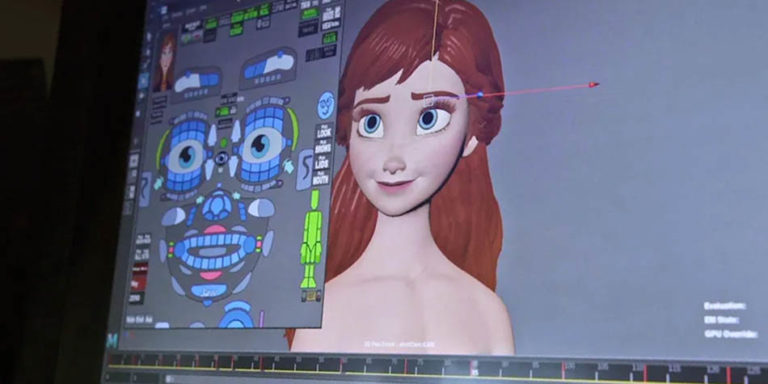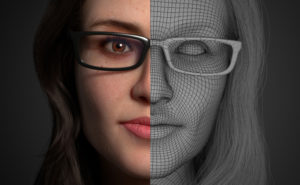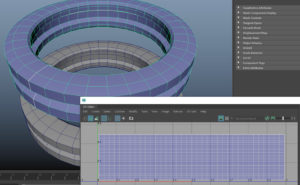The development of visual effects has contributed to the evolution of cinema. When you see a movie with special effects that look so real, do you ever ponder how they did that? CGI software for movies, when used, can take audiences to fantastical new worlds. Computer-generated imagery (CGI) has recently become standard in movies. In this article, we dig into core details about CGI. We will also discuss how it works and its various aspects.
To know more about the artists working inthe entertainment industry, remember to read our article on CG Artwork.
Table of Contents
What is CGI?
CGI is the process of producing visual content using computer software. Computer-Generated Imagery (CGI) is also known as 3D imaging or 3D rendering. A common definition of “CGI” is the use of 3D computer graphics to generate images for usage in media such as movies. The use of CGI ranges from fully animated environments to minor adjustments. In recent years, CGI has become the default visual effect for Hollywood blockbusters. CGI is not limited to 3D and may produce 2D effects. CGI is often employed because it is generally more cost effective than traditional methods. It is also used when it would be unsafe or impossible for humans to generate the visuals.
Characteristics of CGI
- CGI is also used in other forms like advertising, architecture, and even art.
- This method produces high-quality and non-existent images with 10K resolution.
- Effects like creating miniatures are easier to manage when compared to other processes.
- It is capable of producing both two-dimensional and three-dimensional computer-generated imagery.
- With CGI, the heights of imagination become a reality.
Also Read: Best 3D Modeling Software 2022 Free and Paid
What is CGI technology?
The term “CGI” is almost only used to describe visual effects work in and among movie fans in the film industry. CGI software for movies is used to achieve a range of things. These include people, planes, and structures to cars rendered in 3D. A live-action scene is created using these 3D models, such as an explosion of a building. These CGI effects are commonplace and often seen in major productions.
CGI had its origins in the 1950s when mechanical computers were utilized to draw patterns on animation cells. The use of CGI in films began with Alfred Hitchcock’s mystery movie Vertigo premiere. Although CGI was not used in the actual picture, it was a watershed moment in establishing a new perspective on cinematic tendencies to enrich the narrative.
Experimentation with computer graphics began in the 1940s. It began with the creation of mechanical animation techniques using devices made from anti-aircraft technology. John Whitney was the pioneer in the experiments. He later partnered with a graphic designer, Saul Bass, to create the cutting-edge opening credits for the film Vertigo.
Also Read: What is CGI in Movies?

“The Gunslinger’s Vision” is considered the first CGI ever use in a movie. Westworld (1973).
“Westworld” was a more acknowledged first use of CGI software for movies. This 1973 movie starred Yul Brynner as an android in a futuristic Wild West theme park. A Computer Animated Hand is a short film created by Edwin Catmull and Fred Parke. It is also credited with ushering in the era of 3D computer graphics. Edwin accomplished this by drawing 350 triangles and polygons in ink on his hand, digitizing the data, and then animating it in a 3D animation tool written by Catmull.
Also Read: CG Artwork Artist Skills, Tools, Salary, and More
What Are Examples Of CGI In Movies?
Throughout cinema’s history, there have been several examples of CGI in a variety of films. They range from single scenes from mainstream films to the entirety of those films.
The stained-glass knight in the 1985 film “The Young Sherlock Holmes” was the first character created using CGI software for movies. Although he appeared for a short time in the movie, the knight required roughly six months to develop. Yet, this character only had a small part in a movie that was otherwise all live-action.

‘Stained Glass Man’ in ‘Young Sherlock Holmes’ 1985
Although animatronics and other special effects were used in “Jurassic Park,” the breakthrough CGI provided iconic vistas of roaming dinosaurs in the park. The use of CGI software for movies in “Jurassic Park” was ground-breaking at the time and still holds up today. “Avatar” was also a ground-breaking moment in computer-generated imagery. Avatar utilized both live performers and motion-capture technology. The $425 million spent on “Avatar” makes it the most costly film ever made.

Full CG characters from the film Avatar (2009).
Toy Story is the first-ever full-length computer-generated film. The first Pixar picture ever made was “Toy Story” (1995). It set a new standard for CGI films by clocking in at an unprecedented 80 minutes longer than any previous effort. This movie paved the way for future motion picture production with its techniques.
What Is CGI Animation?
An art form known as “computer animation” is used to animate 3D using computer graphics. Also, animation utilizes the same tools and techniques for making moving pictures. The use of CGI animation has grown recently. its use is now commonplace in many industries, like entertainment, filmmaking, and science. Digitally-created, animated sequences can be employed in a wide variety of contexts. These include video games, encyclopedias, web design and commercials. Artists use CGI renders when they make a series of images to be used in an animated sequence.
With computer graphics, you can combine animated and motionless images. Digital rendering on screen combines a wireframe with 3D-created characters, allowing unique animation for each model.
Also read Best Monitor for CG Artist in 2022
What Is The Future Of CGI?
We are aware that computer-generated imagery has progressed over time. Many ground-breaking uses of computer-generated imagery have appeared in movies. To the point where we have to consider it the pinnacle, the point at which all CGI-derived technologies have been exhausted. Yet, change is constant, and the world continues to evolve and provide new difficulties.
If anything, it’s expected that we’ll see a new form of CGI in the future, one that’s even more believable. Besides, considering all factors, CGI’s death seems distant. The world has seen the enchantment of CGI and is unwilling to let it go yet.
CGI is created using different methods:
- Using algorithms can create complex fractal patterns.
- 2D pixel-based image editors can produce vector shapes.
- 3D graphics software can generate everything from simple primitive shapes to complex forms created from flat triangles and quadrangles.
- 3D software can simulate the way light reacts to a surface and creates particle effects.
What Is The Process Behind CGI?
CGI is not as simple as it looks, despite its allure. The construction of a high-quality CGI depends on the coordinated efforts of many people who each take responsibility for one or more specific areas of the process. These areas include:
Initial Visualization → Animation → Matchmove → F.X. Simulation → Lighting → Rotoscopy → Composting
What Program Do Movies Use For CGI?
To complete the 3D rendering process, one or more specialist programs are needed. Software that can model, render, and animate 3D scenes are ideal. Maya, ZBrush, Substance Painter, Houdini, and Nuke are popular programs in this category.
Maya
Autodesk Maya is a powerful CGI software for movies that runs on Windows, Mac OS X, and Linux. Motion Graphics, 3D Animation, 3D Modeling, Dynamics and Effects, and 3D Rendering and Shading are the program’s five main types of CGI tools and functions.
ZBrush
In the realm of CGI, Pixologic has developed a program called ZBrush for use on both Windows and Mac. Using the Non-Photorealistic Rendering option, you may make stunning 2D and 3D images. Using the program’s Spotlight function, you may draw attention to a specific region of your animation. ZBrush’s Snapshot 3D function may be used to turn any 2D black-and-white photo into a 3D object.
Substance Painter
Substance Painter, developed by Allegorithmic, is an effective 3D painting application. It’s like a 3D version of Adobe Photoshop for digital painting. Substance Painter’s primary function is to add surface materials to 3D models. Because of its sophisticated masking and procedural texturing tools, you can create textures that would be impossible to create in a 2D application like Photoshop. Material presets, real-time P.B.R. material operations, and 8k texture baking are a few examples.
Marvelous Designer
Cloth simulation software like Marvelous Designer is used to design interactive garments for virtual characters in video games and movies. Patterns are used by seamstresses to construct garments in the actual world. Sewers follow clothes designs to the letter, tracing and drafting templates before cutting and sewing the necessary fabric. To create an article of clothing, a tailor first needs a pattern. Making digital clothing patterns is an integral part of using Marvelous Designer to design 3D apparel.
Houdini
Houdini is an adaptable CGI software for movies developed by SideFX for use on Windows, Mac OS X, and Linux. This program’s Pyro F.X. module enhances the realism of your simulated fire and smoke effects. Fluids are a great tool to use when you need to apply watery effects. Houdini’s Particle function improves your CGI’s dynamics to their utmost by setting defining guidelines for how particular objects should appear.
Nuke
Nuke is a popular choice for compositing in high-end productions. Top-tier VFX studios use Nuke and Flame. It’s great for 3D compositing and environments, and it aids in the integration of 3D models. Since it supports deep compositing, users are able to manipulate “deep pictures” with many different color and transparency values for each pixel. High-quality visual effects in films like “Black Swan,” “Avatar,” etc., were made using Nuke.
Do Movies still use CGI?
These days, no feature film would be complete without the use of CGI. Today, computer-generated imagery (CGI) permeates every available pixel. There were a maximum of 63 visual effects shots created for the second Jurassic Park film. And more than 2,200 CGI shots were used in the making of The Avengers. CGI was used in 2,750 out of the film’s total 6,500 images, even in the acclaimed Guardians of the Galaxy. So, over 90% of this film is made up of computer-generated imagery.
Find out more about the various aspects that make up computer-generated imagery by reading our article on What is CGI in Movies.

Jurassic World: Fallen Kingdom VFX Breakdown by ILM.
Is VFX a CGI? (Difference Between CGI And VFX)
Creating a scenario with dinosaurs would be impossible without the usage of VFX in films. , CGI involves modeling things and rendering digital images of the models. Although the terms are used interchangeably, visual effects and CGI are distinct processes. Nonetheless, VFX does include computer-generated imagery. CGI is a part of VFX. CGI and VFX can both be built independently. It is possible to create VFX without using CGI by using miniatures or matte glass paintings. It is determined by the user’s needs and the plan’s quality.
What Software Is Used For CGI And VFX?
Visual effects are made with specialized software developed for that purpose. However, CGI is digitally constructed by computer programming but does not necessitate complex software. To create high-quality movies, T.V. shows, or commercials, you need to use good post-production software. Some of these softwares are free, and others are exclusive to those who have the budget or those who can’t afford them.
- Natron is a node-based compositing software that is free and open source. Its user interface and several principles are influenced by digital compositing tools such as Avid Media Illusion, Blackmagic Fusion, Autodesk Flame, and Nuke.
- Blender is a 3D program primarily used for modeling and animation. It is also suitable for post-production work.
- Adobe After Effects is a software used to produce animation, motion graphics, and VFX. Other Adobe tools, such as Premiere Pro, focus on video editing. After Effects can create all extras that make the final result appear even better.
- Blackmagic Fusion is a cutting-edge compositing software. It’s for visual effects artists, broadcasters, motion graphics designers, and 3D animators.
- Flame is a one-of-a-kind high-end visual effects software. It can handle the whole post-production process, from editing to color correction.
- Nuke is currently the most common compositing software in the VFX business. It contains all the tools needed to complete a task, regardless of the project’s complexity or breadth.
Conclusion
Since its inception in the 1970s, CGI has undergone tremendous development. Movies that pushed the envelope of what was thought to be possible also managed to entertain people all around the world. Ground-breaking fresh takes on CGI always force the industry to explore new territories.
Abigeal is a professionally trained SEO copywriter, editor, and content marketing strategist with over 7 years of experience.


